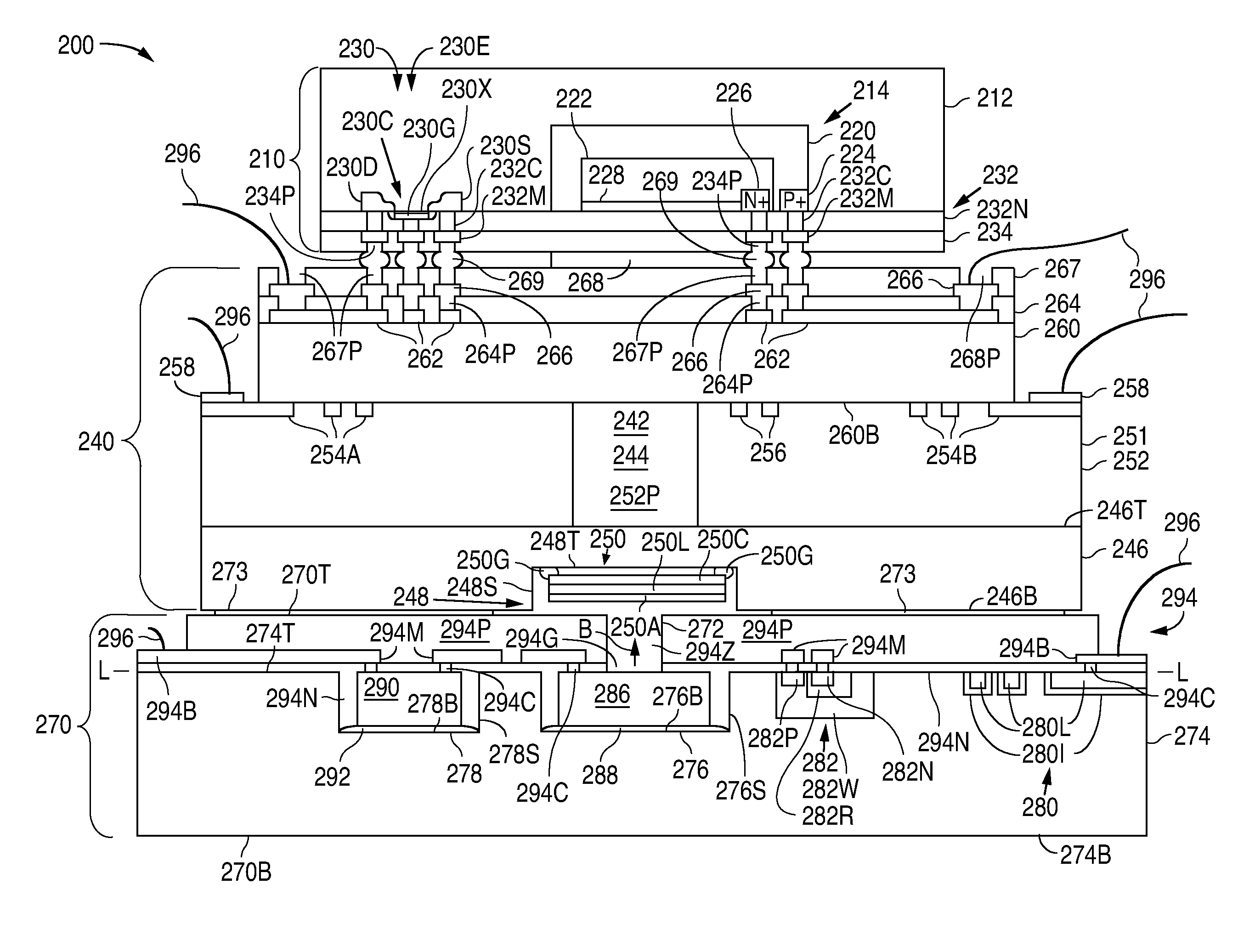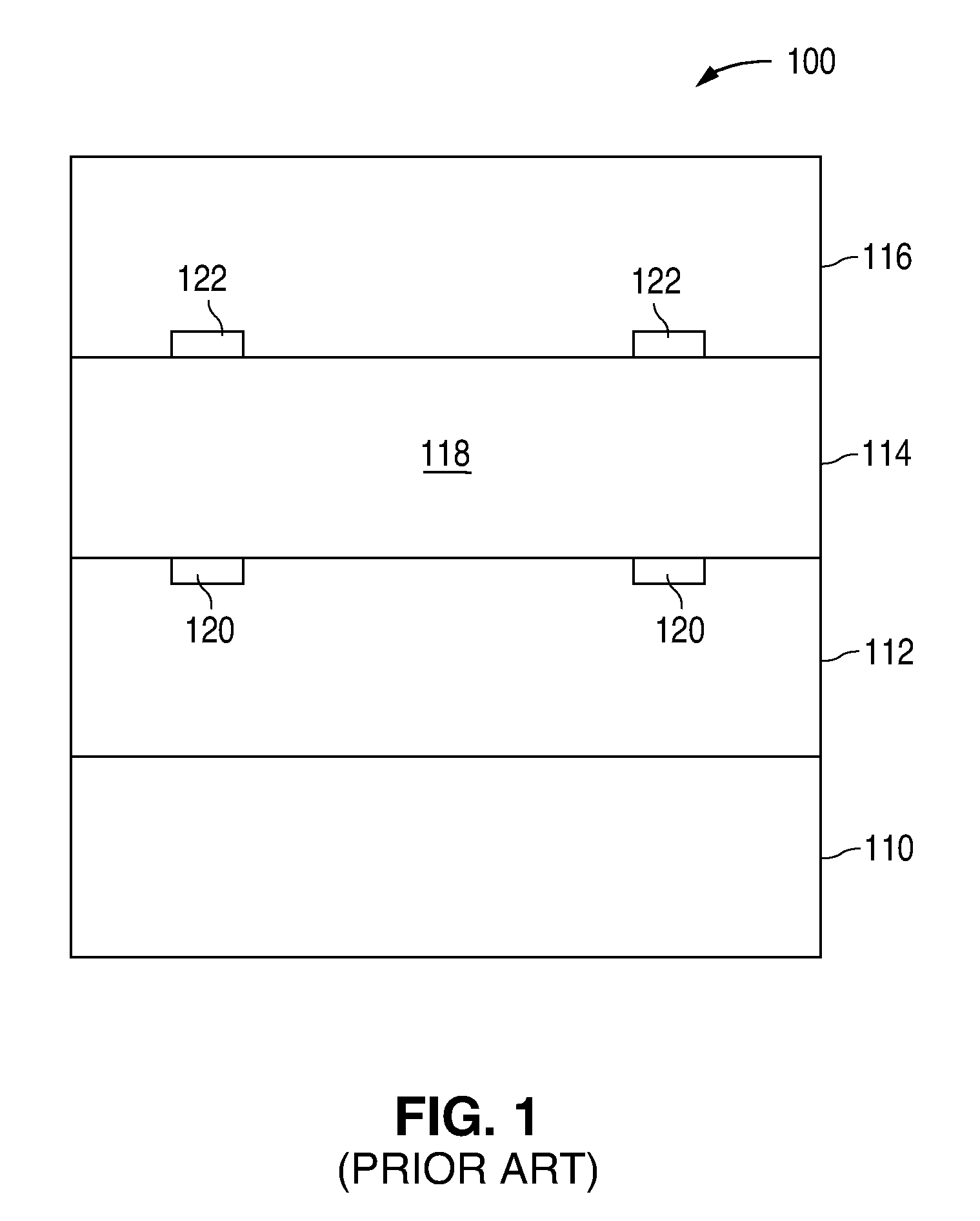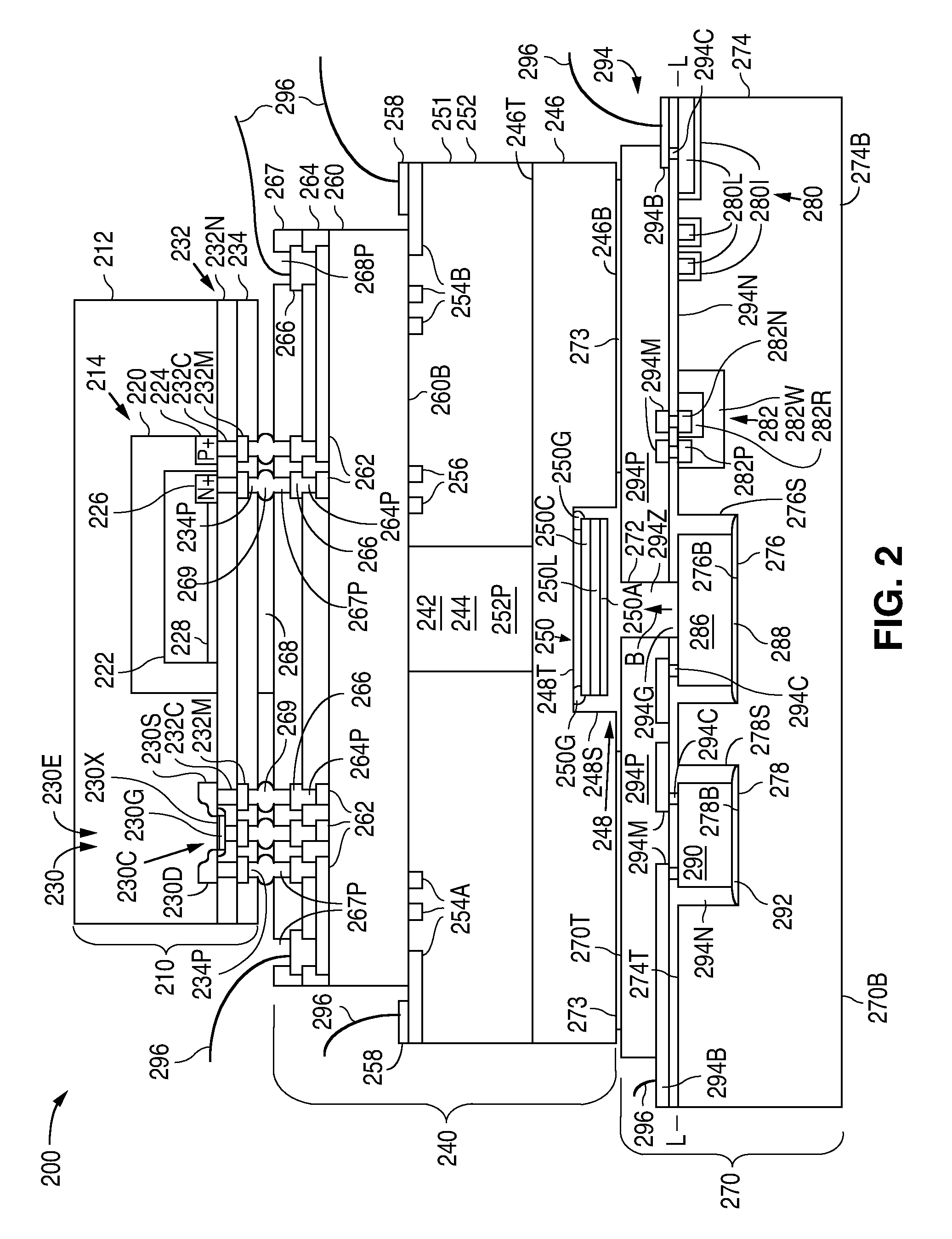Micro-fabricated atomic magnetometer and method of forming the magnetometer
a technology of atomic magnetometers and micro-fabricated atoms, which is applied in the field of micro-fabricated atomic magnetometers and a method of forming the magnetometer, can solve the problem of limiting the types of applications where atomic magnetometers can be commercially utilized
- Summary
- Abstract
- Description
- Claims
- Application Information
AI Technical Summary
Benefits of technology
Problems solved by technology
Method used
Image
Examples
first embodiment
[0039]In addition, interconnect structure 232 includes a number of metal-1 structures 232M that lie on non-conductive structure 232N and touch the contacts 232C. In a first embodiment, the metal-1 structures 232M can function only as bond pad structures (locations for external electrical connections) such that an adjoining die structure provides all of the electrical interconnection required by photodiode 214 and the circuit elements 230 of electronic circuit 230E.
second embodiment
[0040]Alternately, in a second embodiment, the metal-1 structures 232M can function as bond pad structures and traces. For example, the bond pad structures can be used for power and ground, and to input signals to and output signals from electronic circuit 230E, while the traces can be used to electrically interconnect photodiode 214 and the circuit elements 230 of electronic circuit 230E. (Although interconnect structure 232 is shown with a single metal layer, additional metal layers can also be used.)
[0041]Photo detection die 210 can optionally further include a passivation layer 234 that covers non-conductive structure 232N and the metal-1 traces 232M. Passivation layer 234, which is non-conductive and moisture resistant, has a number of openings 234P that expose the pads of the metal-1 structures 232M.
[0042]As further shown in FIG. 2, atomic magnetometer 200 also includes a vapor cell die 240 that receives a light and generates the modulated light. Vapor cell die 240, which is a...
PUM
 Login to View More
Login to View More Abstract
Description
Claims
Application Information
 Login to View More
Login to View More - R&D
- Intellectual Property
- Life Sciences
- Materials
- Tech Scout
- Unparalleled Data Quality
- Higher Quality Content
- 60% Fewer Hallucinations
Browse by: Latest US Patents, China's latest patents, Technical Efficacy Thesaurus, Application Domain, Technology Topic, Popular Technical Reports.
© 2025 PatSnap. All rights reserved.Legal|Privacy policy|Modern Slavery Act Transparency Statement|Sitemap|About US| Contact US: help@patsnap.com



